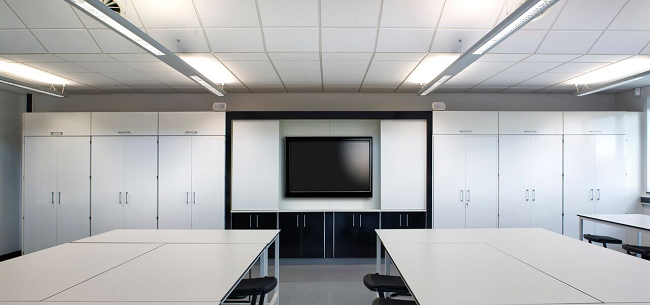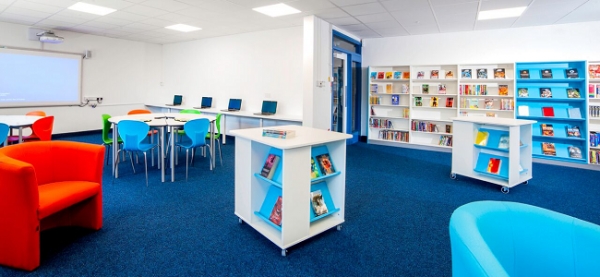With stories of schools holding classes in converted double decker buses and taking over buildings including a former police station to accommodate an ever increasing number of pupils, it’s clear classrooms are at crisis point and many existing learning spaces are no longer able to cope.
This demand on space is further exacerbated by changes in teaching methods. The move away from ‘talk and chalk’-style teaching to collaborative working and a model which encourages pupils to take more responsibility for their learning requires a classroom space that’s more flexible, enabling teachers and pupils to move quickly and easily from working on group projects to individual work.
Placed in a situation that’s likely to have a significant impact on classroom management and the ability of students to learn effectively, what can teachers do to ensure learning spaces can accommodate both growing class sizes and changing teaching methods?
1. Don’t think environment doesn’t matter.
The way children are taught and what they learn is of course vital to their development, but a good learning environment can help to inspire pupils, support their learning and benefit teachers too. A recent report by the University of Salford found that good classroom design can help to improve pupil performance by up to 16 percent, and that factors such as air quality, colour and light can impact on students’ ability to learn effectively.
2. Re-think your layout.
Many teachers are used to adjusting their teaching style to suit the space in which they teach, but changing the way a classroom is laid out can transform learning for staff and students alike, and enable the adoption of modern teaching methods. Loose chairs and tables offer the flexibility to reconfigure the classroom swiftly to meet your needs, from individual work to small groups and whole class sessions.
Fixed furniture can work just as well: using zig zag benching in computer suites not only optimises individual space but improves circulation and offers the teacher the ability to see all the students’ screens, allowing them to spot those who are struggling and help them quickly, so no one gets left behind.
Space-hungry science labs don’t just need room for pupils to sit at desks – they need room to circulate and conduct practical work too. Installing dual function benching which accommodates both theory work and experimentation saves space and time, enabling students to move quickly and easily between tasks.

3. Save space where you can.
When every inch of classroom space matters, storage can take up valuable room. Moving cupboards, shelving and coat pegs into hallways can help to free up space for learning. If that’s not possible, adding teacher walls can create additional space for storage. Wall-mounted shelves and cupboards can be used to store lighter, smaller items such as stationery, adding extra floor space and keeping distracting clutter out of students’ lines of sight.
Desks and benching can also be a great way to increase storage space. Gratnell trays and racks can be built into perimeter or centre floor benching units, or coat and bag storage can be installed to keep pupils’ belongings safely tidied away.
4. Get in the zone.
Salford University’s Clever Classrooms study found that dividing classrooms and learning spaces into zones with different floor plans and furniture layouts can help to stimulate pupils, especially those in their primary school years.
Using soft modular furniture and mobile storage and shelving units, teachers can quickly create the space they need, helping them to focus student attention on small group activities, giving them the room for one to one work or setting up the perfect environment for whole class discussions.
Redeveloping existing school libraries along the more flexible ‘learning commons’ model can help schools create extra learning space too, offering students a place for working, group study and socialising as well as a traditional reading room.
As pupil numbers rise, the future will be challenging for teachers and students alike. Taking the time to think differently about how the learning environment can help to meet this challenge is one way to help schools turn down the pressure of the baby boom.
How do you maximise space in your school? Let us know in the comments.


















